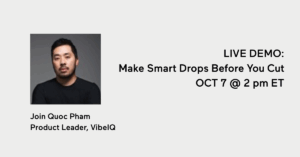Flying a 747 through dense fog with nothing but a paper map.
That’s essentially how many merchandising teams navigate an assortment they can’t actually see. They’ve invested in planning suites and PLM, yet day-to-day line decisions still live in siloed spreadsheets and static slide decks.
The consequences are real—and measurable.
The Product Line Visibility Gap in Numbers
- Spreadsheets cling on. Even as digital adoption accelerates, a recent survey from the Interline found fashion brands only reduced their use of Excel and Smartsheets by 11 percent in 2025—hardly a stampede away from manual tools.
- Blind spots persist. 17 percent of brands still admit they “lack visibility” into their own supplier data, a figure only 29 percent lower than last year according to the same survey from the Interline.
- AI shows what’s possible. As reported by Business Insider, Target now steers more than 40 percent of its product assortment through an AI-powered Inventory Ledger, boosting in-stock rates and processing 360 k transactions per second.
- Cost upside is huge. According to Rapid Innovation, retailers that deploy real-time forecasting cut inventory costs 10-40 percent, according to recent AI-in-retail analysis.
If “what gets measured gets managed,” then what isn’t even visible can’t be planned, costed, or grown.
Why Blind Spots During Your Line Build Kill Growth
| Impact area | What happens when the line is invisible |
|---|---|
| Speed to market | Extra approval loops add 3–5 weeks to the GTM calendar |
| Margin erosion | Duplicate samples + expedited freight when late changes surface |
| Revenue loss | Missed buy-depth calls lead to stock-outs—or costly markdowns |
Analogy — Air-Traffic Control vs. Paper Maps
Pilots rely on live radar—wind, traffic, altitude—updated every second. Imagine them landing a jet using yesterday’s coordinates printed on paper. Merchandising leaders make the same risky maneuver when they can’t view live SKU mix, price tiers, or regional depth across the line.
“You can’t manage what you can’t measure—and you can’t measure what you can’t see.”
—Peter Drucker
A recent Interline survey echoes that insight, noting brands “recognizing the need for smarter, faster, and more resilient supply chains, even if full-scale transformation is still unfolding.”
What Radical Product Line Transparency Looks Like
- Unified, living line board — every stakeholder sees one visual assortment plus live KPIs.
- Bi-directional data sync — planning targets flow in; approved SKU data flows downstream to PLM and demand planning tools.
- Real-time collaboration layer — comments, approvals, and scenario modelling captured in context.
Roadmap to Product Line Visibility
- Audit shadow tools (spreadsheets, slide decks, email threads).
- Prioritise high-value KPIs to surface in real time (SKU count vs. targets, adoption, region depth).
- Select an assortment lifecycle platform that integrates via API—avoid yet another silo.
- Pilot on a capsule; measure GTM days saved and margin lift.
- Scale across divisions; bake visibility into every quarterly business review.
The Payoff of Product Line Visibility
- Speed — Faster line alignment and a shorter calendar.
- Confidence — A single source of truth, fewer re-works.
- Revenue impact — Higher adoption, lower markdowns, stronger sell-in.
Growth planning dies in the dark. Turn on the lights, and the line becomes a lever—one you can finally pull with precision.
Ready to see a live, always-current line board in action? Book a personalized VibeIQ demo and watch your assortment come into view—no fog, no paper maps, just real-time clarity.
Sources Cited:



